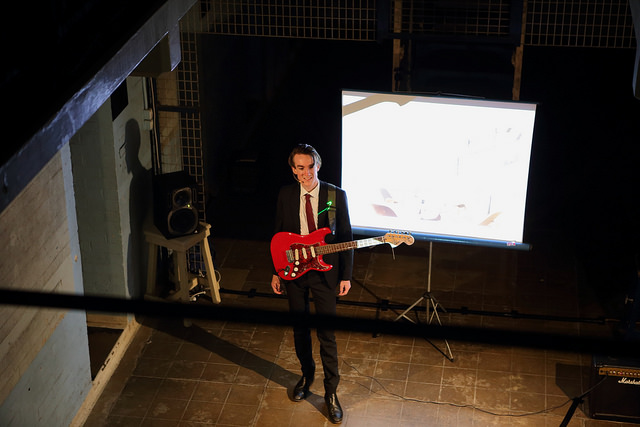
Institutional Capture
- 10 Nov 2015
What
Institutional Capture was a site-specific event at Boggo Road Gaol as part of OtherFilm Festival 2014. The experienced OtherFilm team of Danni Zuvela and Joel Stern delivered the project involving installations and performances by 20 local, national and international artists. Danni conceived and directed the project as a critical artistic investigation, working closely with the artists on site visits, group discussions, library research and reflective conversations. This resulted in a highly developed presentation of artworks and performances which considered not just the historical materiality of the site, but the larger systems and stories in which it is located.
The event began at sundown with projections and musical performance. The audience was encouraged to explore the space to encounter the many installed works and performances taking place throughout the evening in the gaol cells, workout yards and the quadrangle.
Institutional Capture generated new understandings about the Boggo Road Gaol site and related topics including mandatory detention, hauntology, incarceration, privatised security industries, gentrification and urban development. The event raised the profile of the Queensland artists involved and allowed a reinterpretation of this historic and controversial Brisbane icon.

When
November 2014
Where
Dutton Park, Brisbane
Key stats
- 1100 attendees
- 9 performances and 25 new works
-
20 paid artists and 60 volunteers
Arts Queensland contribution
$15,000 – Projects and Programs Fund
Outcomes
- The event: Presentation of the nine performances and 25 new works garnered strong praise from those who attended with 80% of attendees rating the work as good or excellent.
- New expertise: Some of the artists involved were previously known largely for their installation work. Through the project they were able to develop and extend their performance skills.
- The experience: The show deepened audience awareness of experimental, site-specific, historically-informed practice and contributed to the market for cutting-edge live practice in Queensland.
- The Single: The …from soapbox to Senate soundscape single was produced on site by Andrew Tuttle and his reputation enhanced the profile of the event.
-
What next: New collaborations and networks were formed between the artists, research and other cultural workers on the project. The curatorial team will work in partnership with several of the artists and creatives on a new project under development.
Learnings and reflections
The project leaders reflected on what they learned about the development process and about audiences:
The project generated a lot of opportunities to engage sensitively with an iconic Queensland space at a critical moment in its cultural and institutional history and a chance to reflect on the evolution and sophistication of Queensland’s contemporary artists and arts audiences.
What worked well was the long lead time built into the commissioning process with the Queensland artists, enabling the project to contribute significantly to artist development and create new linkages, networks and relationships. This meant that not only were the artworks generated of a very high calibre, but the experience of the project will go on to generate positive effects throughout the Queensland art community. This worked so well that OtherFilm will pursue this methodology and curatorial approach again.
The large and enthusiastic attendance provided opportunities to learn about the willingness of Queensland arts audiences to open themselves to a program of significant discursive depth, and we learned new methodologies for the incorporation and leverage of research into critical art projects.
The tip we would give other people doing similar work is not to underestimate your audience, and not to be afraid to embrace research, discourse and dialogue in your curatorial and artist development activities.
What we would do differently next time at the organisational level is to reduce the program by one artist and increase our support staff by one administrator to better distribute the production and delivery tasks among the team. What we would do differently at the creative and curatorial level is to then spend even more time with artists, in order to assist them to conduct further research, extend their practice even further, and so further engage the arts audiences who experience the final outcome.
Contact for further information
Email: danni@otherfilm.org
Website: http://otherfilm.org/
Links
Essays, and summaries of the artists’ work: http://otherfilm.org/institutional-capture/
Photos from the event: https://www.flickr.com/photos/vixpen/sets/72157649523649745/page2/
A printable version of this case study (PDF) (243.29 KB) is also available.
Featured image: … from soapbox to senate. Photo: Bryan Spencer

